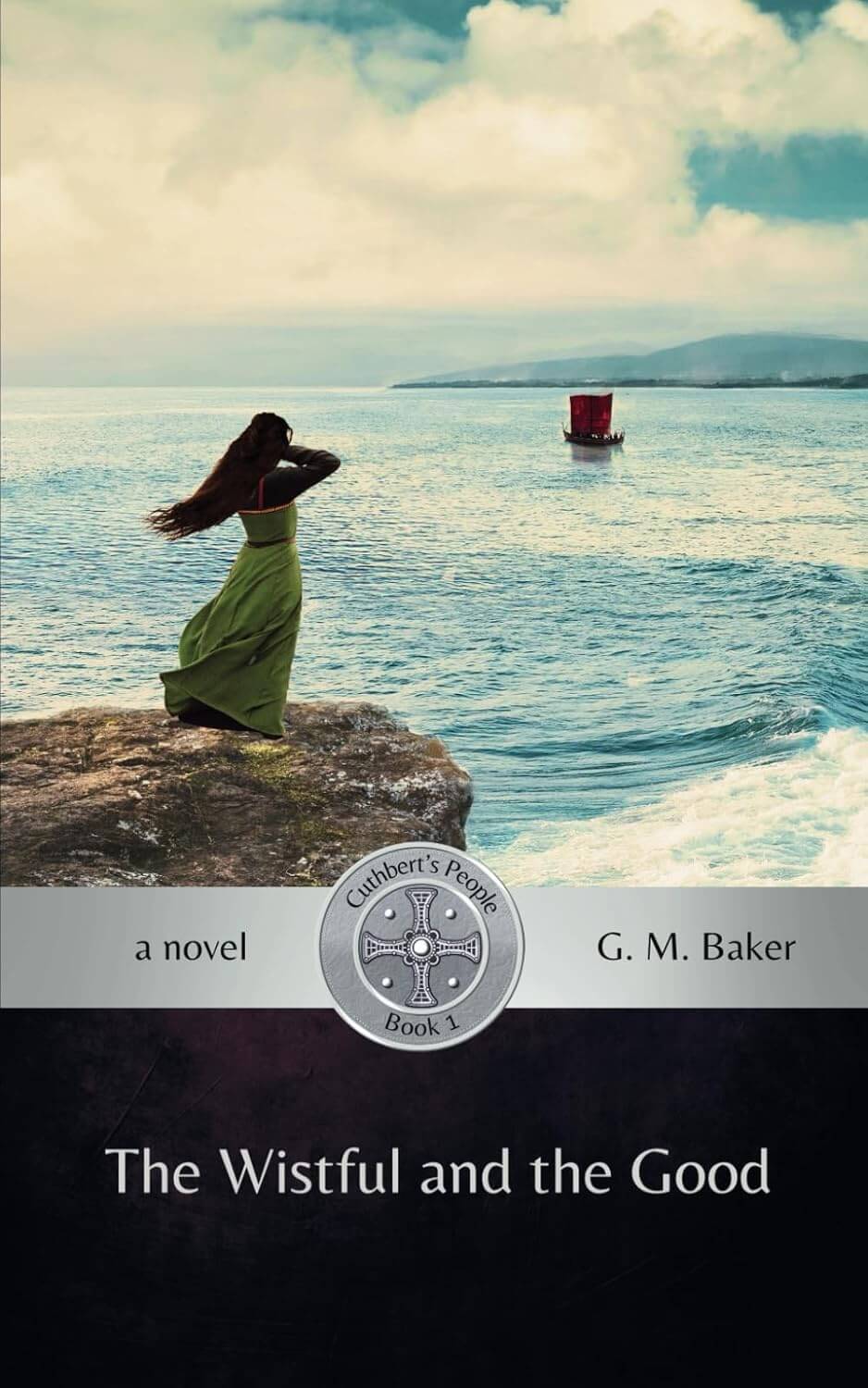Genre
Audience
Author’s Worldview
Year Published
2022
Themes
Love, duty, responsibility, sexual morality, family, kinship ties, Anglo-Saxon England, Vikings, Norse traders, Lindisfarne, Sacking of Lindisfarne, thegns, slavery, the sea, betrothal
Reviewed by
At the end of the 8th century, a ship full of Norse traders lands on a Northumbrian beach two weeks after the sacking of Lindisfarne by Vikings. Can the ensuing tangle of divided loyalties, forbidden love, and overwhelming temptation avoid spiraling into death and destruction?
Elswyth’s mother was born a slave, but her father is a thegn (a local lord). She has been betrothed since earliest childhood to Drefan, the son of the ealdorman (the area’s overlord). Content with an advantageous match to a good man that will free the rest of her maternal family from slavery, Elswyth still turns her wistful gaze on the sea, from which come thrilling tales of travel and adventure. But when Norse traders arrive on the beach only two weeks after the sacking of Lindisfarne, even their long-standing status as oath-kin to Elswyth’s father barely prevents violence. As Elswyth’s affection for Leif, the young leader of the traders, deepens, and tempers run high, can she fulfill her family obligations and keep the peace, or will everyone’s future be lost in violence and betrayal? This historical novel was an easy read that kept me turning the pages all the way through.
Although the author is at pains to point out at the end that he is a fiction writer, not a historian, the novel provides a refreshing immersion in the historical period, without modern ideas being forced anachronistically onto the characters, a major problem with much current historical fiction. Although there is a suggestion of modernity in how much casual physical contact Elswyth has with unrelated men, and also in her refusal to cover her hair before marriage, the fact is that we have very limited information about the norms of eighth-century Britain. Willful children and indulgent parents exist in every time and place, so it is possible to suspend one’s disbelief. In this story, we feel as though we are simply seeing the characters’ world through their eyes, with all the assumptions of their time.
Slavery is perhaps the best example of this convincing realism. Although Elswyth’s mother was a slave before marrying her father, and although she and her parents are seeking to free the rest of her family, they are only concerned about their own relatives—none of the characters see anything wrong with slavery itself. Once her father has freed his enslaved in-laws, he will simply buy new slaves. “After all, how else will he run his manor?” Elswyth and her mother would say.
Sexual morality is a major theme in the book, as is trust. Paganism vs. Christianity, and personal property rights are also themes that are visited several times in conversations between the Norse and English characters. Responsibility to one’s kin and lord and subordinates is also a key plot theme, along with the self-sacrifice that may entail. The question of whether it is ever acceptable to sin to gain some great benefit, even if it is for others and not for ourselves, also recurs multiple times.
You can see disaster coming in this book but can’t do anything to stop it. From your all-knowing position as reader, you desperately wish the characters to make different decisions—but to no avail. By the end, Elswyth in a way has everything she yearned for, yet almost nothing that she wants. The ending is a bittersweet one, and sadly what little sweetness there is to it is badly marred by the synopsis for the second book, included at the end, which seems to suggest that even this sweetness is to be short-lived. Without the inclusion of that synopsis, I would have been keen to buy book two (which, along with book 3, has already been released). As it is, I suspect I will drag my feet, preferring to keep the muted happiness of this ending. Readers who prefer melancholy stories will probably enjoy this book more than fans of strict happy endings.
Pivotal aspects of the plot turn on a Christian view of sexual morality, but the pagan Norse characters hold similar views, if for slightly different reasons, and such attitudes are simply the historical reality of the period. Many secular readers should therefore be able to enjoy the book just as much as Christian readers.
There is quite a lot of sexual tension and frank discussion of characters’ desire for intimacy with one another. There is also some frank, though never explicit, discussion of the sexual realities faced by slave women, such as when Elswyth’s mother reflects that when she was a slave, “I could never have kept my virginity. All I could do is choose the thegn who took it.” Parents of more sheltered teens will probably wish to pre-read. However, despite much dalliance with sinful temptations throughout, the overall message of the book is a sound one. Sexual immorality always has negative consequences, of one kind or another, especially in this historical setting. This message, however, is not overt or belabored.
There are a number of rather beautiful reflections in the novel, and one of my favorites is from the much-tempted Elswyth: “One did not marry because one only ever had such thoughts about one man or one woman. One married to purify those thoughts for one man or one woman.”
And also the line: “Love, she had always been told, was the product of a happy marriage, not its cause.” Quite a challenge to our feelings-based society!
This book would be suitable for any secular readers who are not unduly put-off by characters seeking, for a variety of reasons, to be sexually continent. The Anglo-Saxon Catholicism is unlikely to put off many Protestant readers, and the monk character is, in fact, for the first part of the book, the butt of slight, long-running joke. The monastery-centered faith and the monk’s skill with preparing ink and reading and writing will appeal both to Catholics and to the historically curious. I hadn’t realized how many ways there were of making ink, and what a highly skilled profession literacy was back in the day.
This is a great read for any fans of historical romance or historical drama who are happy to read a book with sexual tension but nothing explicit. It immerses the reader convincingly in a little-known historical period, playing out before your eyes the fact so often recorded in history books—that as many Norse traders reached British shores in the 8th century as did Viking pirates, even if it’s often only the latter that are remembered.



